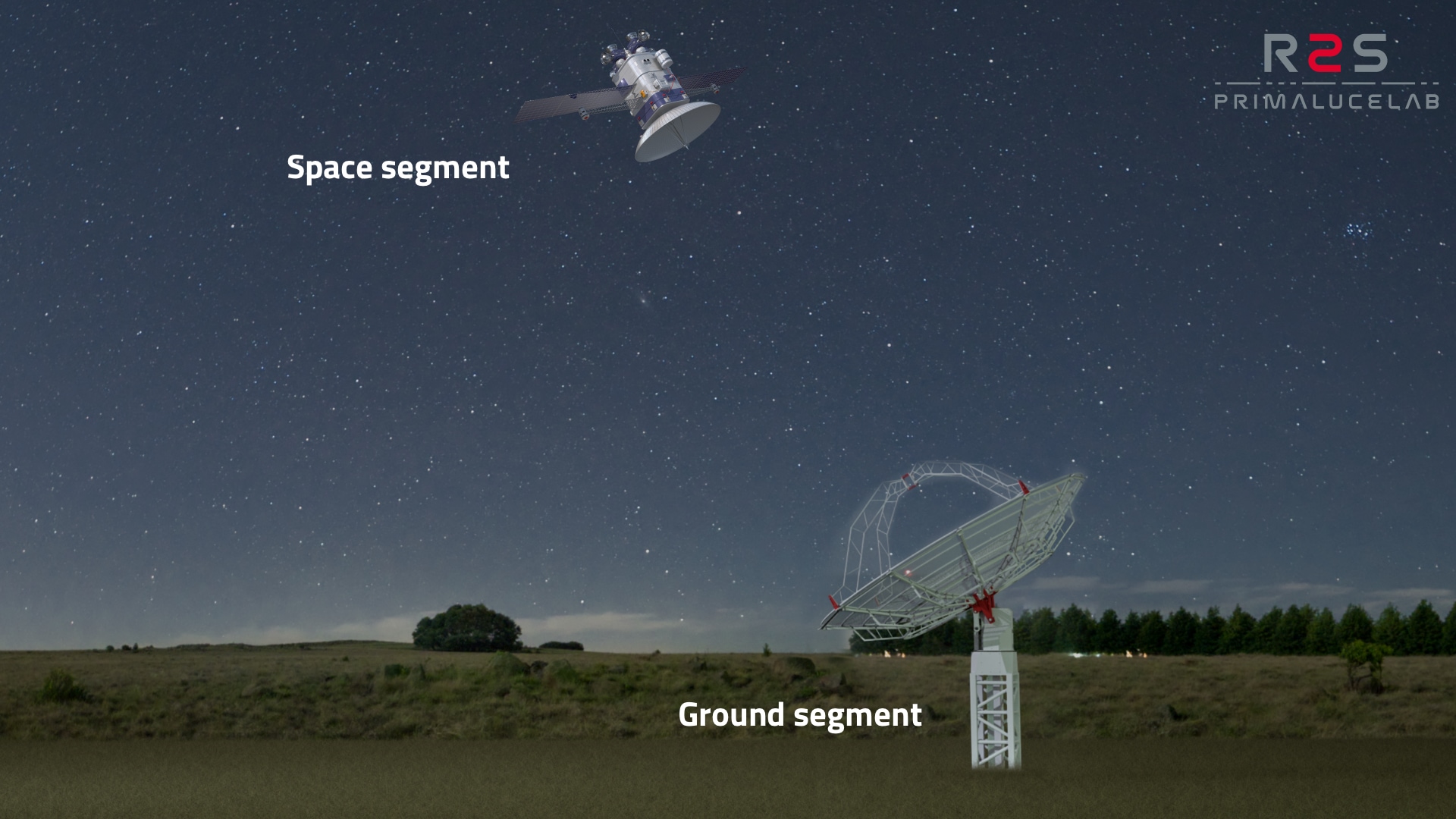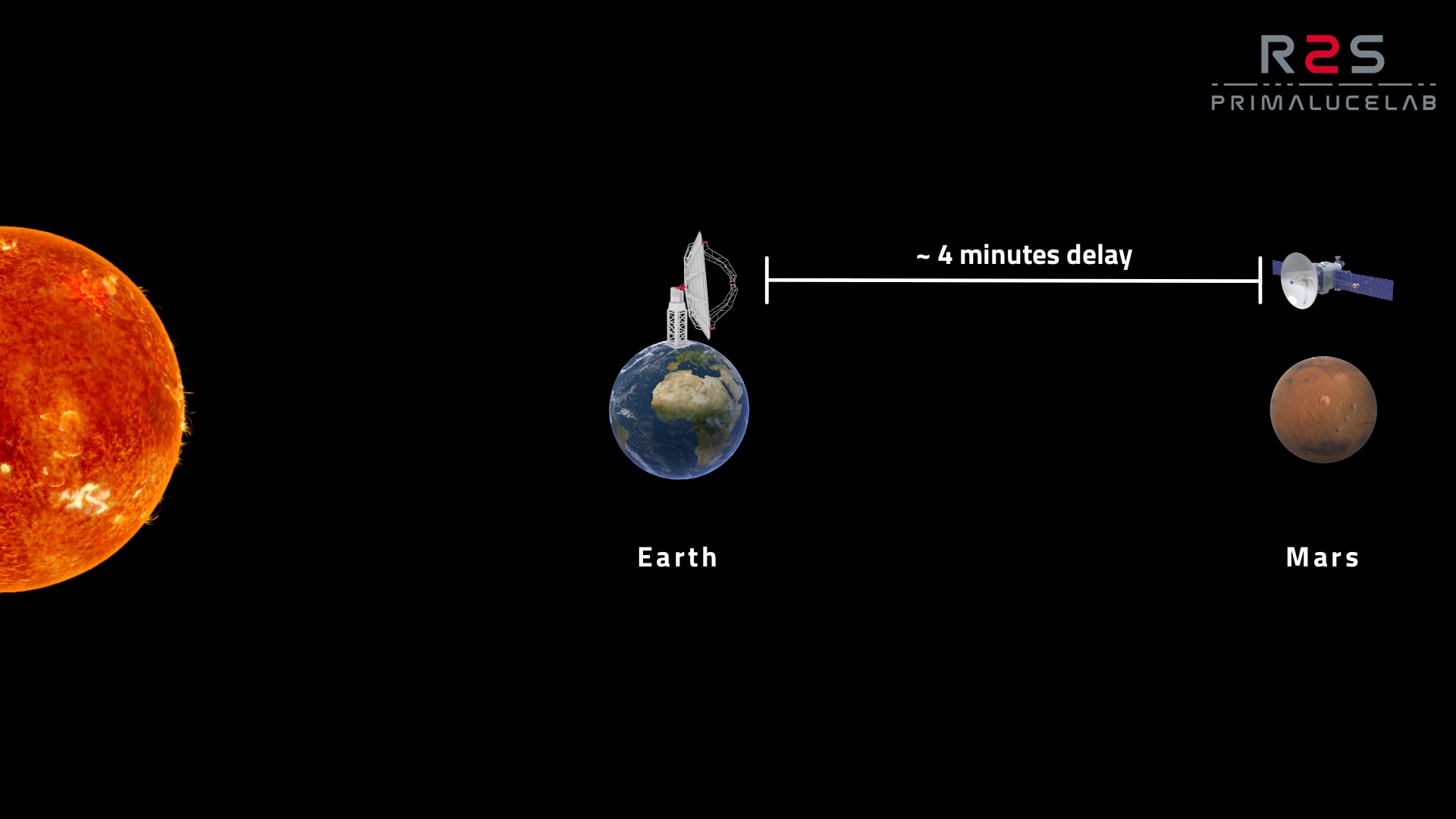Space communication is the exchange of data between Earth and Space or between 2 points in Space. Since Space communication requires to send and receive messages across great distances, such as from the Earth ground to satellites in Earth orbit or a spacecraft into deep space, it involves the employment of cutting-edge technologies. A space communication system requires the use of at least one ground station on Earth (the ground segment) and at least one spacecraft (the space segment). Their tasks are receiving orders from Earth (uplink), sending data to Earth (downlink), and sending or receiving information from another satellite (crosslink).

A space communication system requires the use of at least one ground station on Earth (the ground segment) and at least one spacecraft (the space segment). Image not in scale.
Since the Earth atmosphere is not transparent at all the wavelengths but only in correspondence to visible and radio ones, and since this application requires dependable transmission, space communication systems are specifically designed for particular bands of electromagnetic spectrum and are divided in two different systems: free space optical (FSO) also known as laser communication (lasercom) and radio frequency (“RF”). Even if recent developments in FSO have made it a compelling alternative to RF systems, radio frequency is the most common technology used in space communication. Radio space communication provides a lower data rates in respect to laser communication but the shorter wavelengths of FSO also result in narrower beamwidths which require pointing the laser communication system more accurately. More laser systems are also susceptible to attenuation due to moisture and clouds. For both the systems, the involved great distances make signals weak (causing the deterioration of data) and create latency issues (considering the light speed of around 300.000 km/sec, at the closest approach to Mars a time delay of around 4 minutes is given – you would need to wait this long for mission control to receive your message if you were communicating from or to Mars).

At the closest approach to Mars, a signal transmitted to the Earth will take around 4 minutes to arrive. Image not in scale.
Satellite communication, remote sensing, space exploration, disaster management, navigation and weather forecasting are just a few of the many applications that depend on space communication. We may use it to send commands to and receive data from a satellite, or to interact with astronauts on the International Space Station and other human missions.
INTREPID ground station antenna systems for space communication
If you want to own and operate a ground segment for radio space communication, you can use the INTREPID ground station antenna systems that are designed with different antenna dimensions and for various radio bands. Add your own feed, LNA and receiver/transceiver to personalize your ground segment and use our provided developer documentation to integrate in your Mission Control software to create an affordable solution for space communication! If you want to know more about our INTREPID ground station antenna systems, you can click here and discover all the available models. In order to allow everyone start his project, PrimaLuceLab also offers design, shipment, installation and training services: we can support you from design to shipment, from installation to on-site training.
